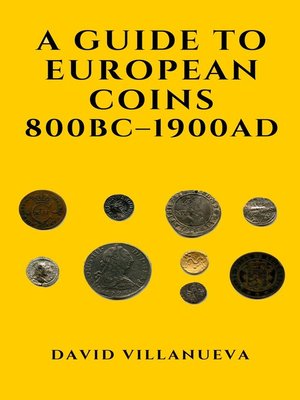
Sign up to save your library
With an OverDrive account, you can save your favorite libraries for at-a-glance information about availability. Find out more about OverDrive accounts.
Find this title in Libby, the library reading app by OverDrive.



Search for a digital library with this title
Title found at these libraries:
| Library Name | Distance |
|---|---|
| Loading... |
The purpose of this book is to not only provide a brief history of European coins but also to assist with identification. As an avid reader of the metal detecting press, time and again I see imported coins regularly dismissed as tokens. Whatever your interest in coins it is worthwhile getting to know about coins within and outside your own country or collecting interest. People all over the world collect coins and many are rare and valuable. The most valuable British coin, a metal detecting found Double-Florin of Edward III, is worth over a million US dollars! You wouldn't want to throw that in a draw or pass up the opportunity of purchasing one for a bargain price at a sale.
Coins originally were worth their weight in the metal they were made from and were generally accepted anywhere that coins were used, regardless of their origin. Only the few educated and elite among the population might know they were from foreign lands.
The number of different coins issued in Europe between 800 BC and 1900 is vast and it is impossible to include anywhere near all of them in a handy reference guide such as this. Catalogues of Roman coins alone take up five hefty volumes for instance. The aim here is to provide brief descriptions of issues and plenty of illustrations covering the main types.
Once you have some idea of the origin of the coin, it should then be a relatively easy matter to thumb through the book and relate the coin to an issue and, if needed, a more accurate identification will be found online or in printed catalogues probably available through your local library. You will find a bibliography and sources list at the end of the book, which should guide you to further information.
If you are ready to improve your knowledge of European coins, scroll over to the buy button.






